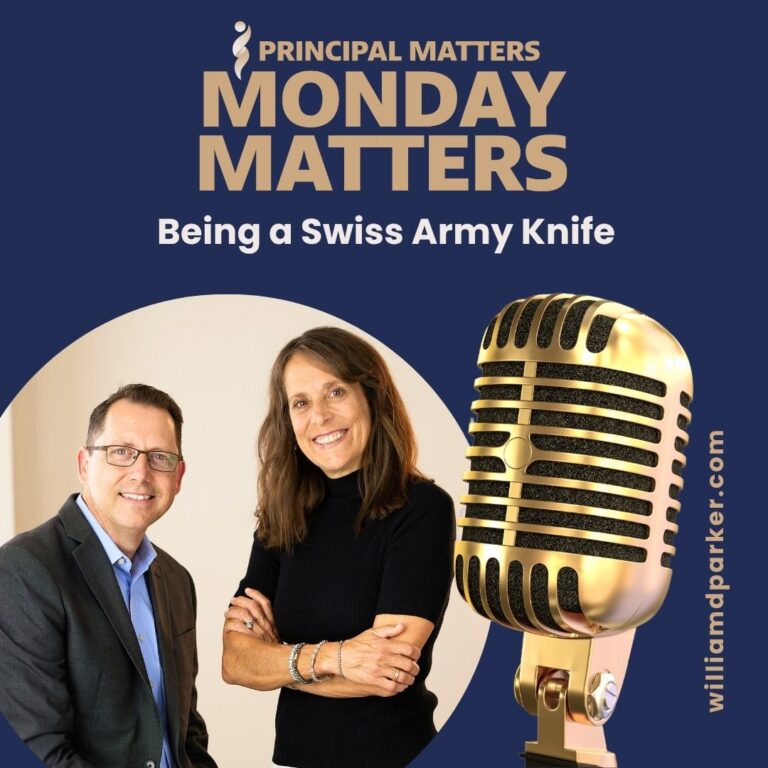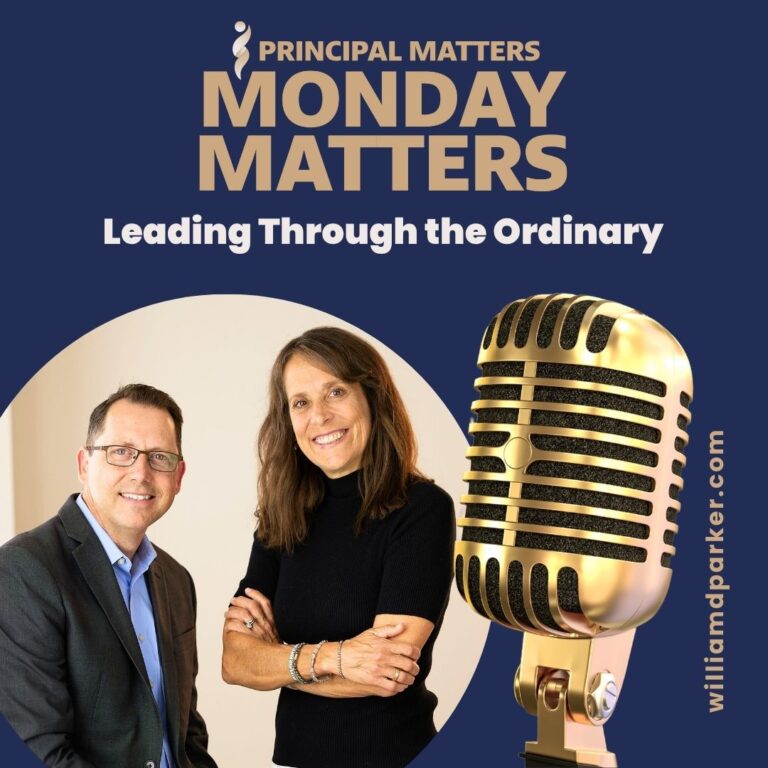Podcast: Play in new window | Download
Recently, Rachel Simmons wrote an article in the Washington Post called Perfectionism among teens is rampant (and we’re not helping).

It is a good reminder how this generation of students faces challenges and opportunities different than ones we faced at their ages — sometimes with stress that we’ve created for them.
Students today have never known a world without internet access, global terrorism, school shootings, economic uncertainty and political unrest. These realities cause many of them to struggle with depression. At the same time, students today have opportunities no other generation has had before them: access to information, new job creation, employment mobility, entrepreneurship opportunities, and social media movements.
So how do we encourage, not stress-out, our students? One way is by our messaging with them. To create encouraging environments, school leaders must learn to see schools through the eyes of students.
With those thoughts in mind, I wanted to share a recent webinar I hosted with my state association on Messaging with Students. It is a focus on how to create welcoming environments, celebrate student success, and enhance communication. Below is a summary of the discussion with some checklists to consider.
Part 1: Ensuring a Welcoming Environment
How do we create environments where all students feel welcome, secure, and encouraged in a culture where many students already feel stressed?
Here some questions you can ask when analyzing your own school’s checklist:
- Do we have signage so students know where they are?
- Are hallways free from clutter and create an encouraging learning environment?
- Have we trained our staff to be welcoming, greeting, and guiding guests?
- Are student schedules printed in advance and school maps available?
- Is the school website updated with a current calendar?
- Have we held orientation meetings for students and parents?
- Have an informative, welcoming email or letter been published to your community?
Part 2: Celebrating Student Success
Celebration begins with mindfulness. Here’s a checklist of ways to assess how you’re supporting celebration:
- Are you looking for moments of learning, joy and success to celebrate?
- How are you sharing those moments of student success through newsletters?
- What creative mottos can you use as a school?
- How can you involve students in the school announcements?
- What routines or rituals can motivate student enthusiasm?
- How can you recognize good deeds and acts of kindness?
- How can students help drive celebration?
Part 3: Communicating with Students
Unless we are willing to listen to our students, we will not be able to know what they need.
Messaging begins with trust. Communicating with students includes:
- Showing dignity and respect to students
- Keeping our messages to them positive
- Being consistent
- Being human
- Being professional
- Providing resources and supports
- Staying hopeful even with uncertain outcomes
I also mention the resources all students need to succeed : 8 Resources All Students Need (from Ruby Payne, A Framework for Understanding Poverty)
- Financial resources
- Emotional resources
- Mental ability or acquired skill
- Spiritual guidance or purpose
- Physical health or mobility
- Support systems: family, friends, available backup resources
- Relationships/role models
- Knowledge or hidden rules or cues
Let’s Wrap This Up
When I was fourteen years old, my father reenlisted in the military. As a result, I attended a different school every year during high school. I attended schools in Tennessee, New York, and Virginia—in rural, suburban and urban environments. I had to walk into every environment as the new kid. When I become an educator, I asked myself, “What does my classroom look like through the eyes of a new student?”
Sometimes we can become so familiar with our own school settings that we fail to look at them through fresh eyes. How can you keep a clear perspective on your school by constantly looking at your entire school experience through the eyes of students?
Now It’s Your Turn
How can you organize your messaging to be consistent, no matter the challenges?
What are rituals, routines, or practices for a strong learning environment? What ways can you take risks to connect with student engagement? What resources can you identify to help students be successful?
Sign-Up For Free Updates and Ebook
When you enter your email address below, you will automatically receive my newest posts and a free Ebook, 8 Hats: Essential Roles for School Leaders. Let’s keep learning together!
Subscribe for free weekly updates and receive free e-book!
(function($) {window.fnames = new Array(); window.ftypes = new Array();fnames[0]=’EMAIL’;ftypes[0]=’email’;fnames[1]=’FNAME’;ftypes[1]=’text’;fnames[2]=’LNAME’;ftypes[2]=’text’;}(jQuery));var $mcj = jQuery.noConflict(true);
Principal Matters–The Book!

School leaders are very busy, so each of the twenty-four chapters is designed as a quick-read and followed with take-action questions for follow-up or reflection. If you want practical ideas on understanding your purpose, managing school teams, dealing with challenges, and leading with courage, action, motivation, and teamwork, go HERE to pick up a copy for you or your team.
Messaging Matters

Harness the power of messaging to create a culture of acknowledgment, respect, and celebration. Written specially for leaders, this title is divided into three parts, helping readers to maximize their role as chief communicators with students, teachers, and parents and community. Each chapter includes suggestions for using digital tools to enhance messaging and ends with reflection questions and practical next steps.




